Nicaragua: A Struggle to Safeguard or Exploit the Biosphere
Settler invasion reaches core of Bosawas Biosphere Reserve

The invasion reaches Lakus watershed, core of Central American rainforest: Mayanga seek to protect land, avert violence
Text and Photos by Karl Frost
HAVANA TIMES – The Bosawas Biosphere Reserve in northern Nicaragua was created to protect the heart of the largest contiguous tropical rainforest in Central America. Its core conservation zone overlaps several semi-autonomous indigenous territories, belonging to Miskito and Mayangna peoples. Both the rainforests and indigenous communities span the Nicaragua/Honduras border. While the there has long been a history of settler (“colono”) invasion and land theft, it has in the last years reached the isolated core of the rainforest, the Lakus watershed.
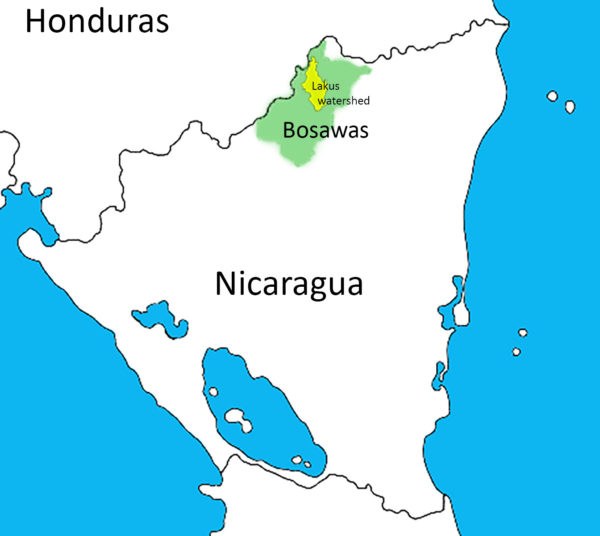
The Mayangna village of Arang Dak, straddling the Lakus River, is in the Kipla Sait Tasbaika indigenous territory, the most remote and, until recently, most successfully preserved of these territories. To get to Arang Dak from the nearest road takes 2 days via boat. Villagers subsist on small-scale agriculture, primarily rice, beans, and plantains, grown on their fincas: forest gardens that rotate into and out of use. They supplement this with fishing, hunting, and some livestock. Satellite maps up until 2017 show the Lakus sitting in the center of an enormous, remarkably preserved area of tropical rainforest. This is changing rapidly, with an accelerating invasion of mestizo colonos, occupying territory that had been set aside as conservation reserve. The Mayangna have already lost half of the 800 sq km Lakus watershed. They are trying to hold onto what remains.
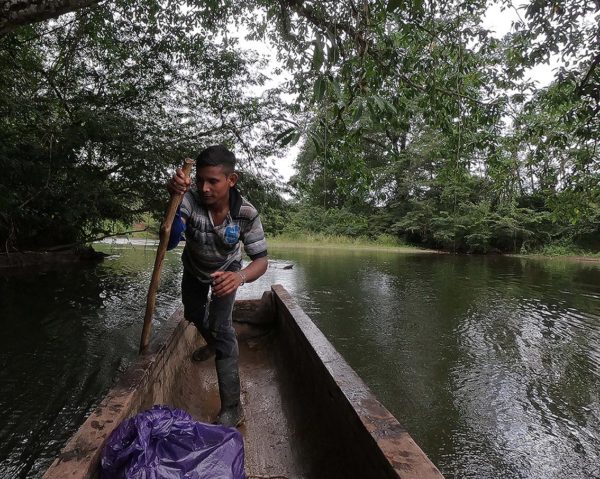
History
In the conflicts of the late 1970s, indigenous groups were violently displaced from northern Nicaragua, many fleeing to Honduras or joining the Contra rebels. Indigenous fighters agreed to lay down their weapons in the 80s in exchange for officially recognized territories and semi-autonomous governance, territories held collectively, rather than titled to individuals to buy and sell. The Nicaraguan government committed to protect the boundaries of the indigenous territories from settler (“colono”) land grabbing. In 1997, the Nicaraguan government established the Bosawas Biosphere Reserve, and the collective land titling process was finished in 2008.
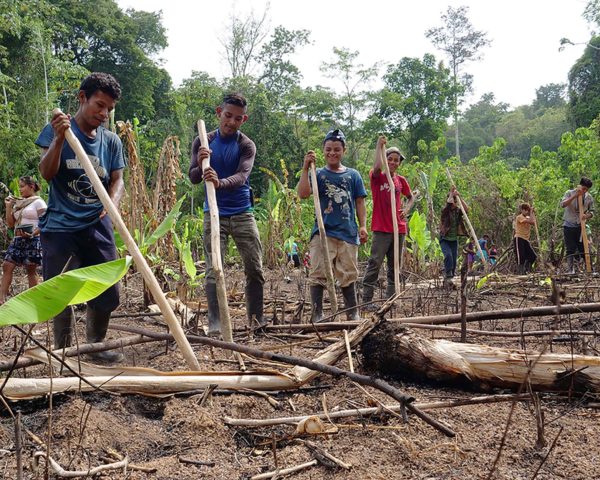
Indigenous groups and environmentalists have hailed Bosawas as a major conservation success, protecting tropical rainforest and sustaining populations of endangered wildlife. The effectiveness of indigenous land control is visible in comparing Bosawás to Patuca National Park, across the border in Honduras, where indigenous land titling is just beginning. Between 2001 and 2021 Patuca lost 34% of its forested area, compared to 16% in Bosawas. Within Bosawas, Anthony Stocks et al, in a 2007 report detail how the southern, mestizo controlled areas of Bosawas were deforested at 16 times the indigenous rate, owing to more intense land clearing per capita and mestizo population explosion.
For 20 years, the indigenous controlled parts of Bosawas remained largely protected, with sustainable, low impact land use and the majority of territory left as untouched land reserve. With the decline of enforcement of indigenous territorial borders has come a corresponding crisis of colono invasion, eroding forest protection.
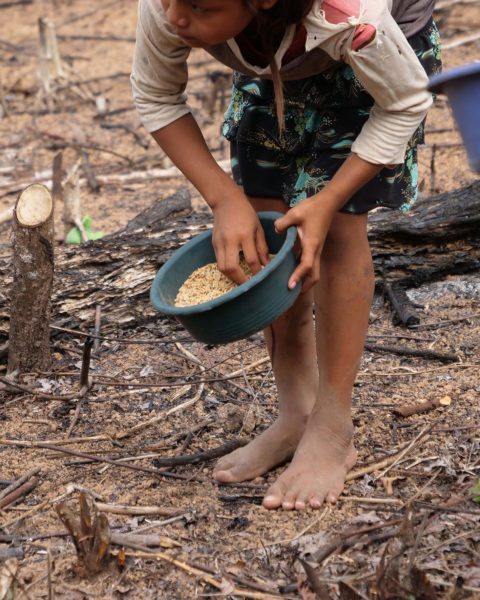
Land Grabbing, Deforestation, and Cattle
The guardabosques are volunteer indigenous forest rangers. Demasio Lopez, Mayangna guardabosque from the Bocay River, describes how rainforest wildlife like tapir, peccary, and guan are disappearing due to increased colono pressures, with doubling or tripling the time and distance between wildlife encounters during forest surveys over the last decade. Indigenous hunters in Arang Dak describe the same.
Since 2000, land cleared in Bosawas for cattle and agriculture has doubled, overwhelmingly due to non-indigenous settlers. A study in the 90s by the Nature Conservancy found that the mestizo population within Bosawas was growing at 17% per year. Recent interviews with Mayangna leaders from different territories indicate that this has accelerated, with illegal colono populations reportedly doubling every few years in remote areas.
Guardabosques see a difference in land ethics, with colonos treating land as a route to quick profit rather than as a long-term home. While data shows that the colonos clear drastically more land per capita than the indigenous, this is only part of the story. A Mayangna finca is used for about 7 years as it gradually returns to forest, recovering 90% of its pre-clearing forest ecosystem qualities within a few years after being abandoned. Cattle ranching, on the other hand, has heavier impacts on the land, leaving land depleted and taking many decades to recover.
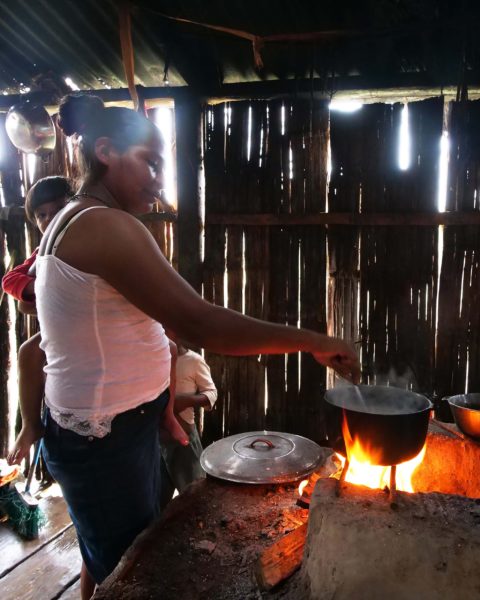
As detailed in a recent report from Insight Crime, the regional illegal cattle industry is enormous. Drug cartels use the cattle sales to launder money and use violence to secure the land and avoid law enforcement. Ranching in Bosawas is estimated to be on the order of 200,000 head of cattle, much of it raised illegally on stolen indigenous lands. Neighboring forests in Honduras are often cleared for massive ranches, reportedly owned directly by cartels. In Bosawas, the pattern of land clearing is patchy, indicating independent colonos and smaller criminal gangs, who then sell the cattle to cartels.

While indigenous territories are legally under local indigenous authority, by colonial custom, if land was “undeveloped”, someone could clear a pathway or carril around a section of land and claim it. Unscrupulous land thieves have been clearing carrils in indigenous territories and then selling to poor, non-indigenous campesinos. The land thieves are not just mestizo. As pointed out by Jesus Demasio and other Mayangna, they include unscrupulous indigenous individuals, falsely claiming authority to sell it. While indigenous families have temporary exclusive land use rights, the territories are collectively owned and can not legally be sold. Corrupt lawyers however draw up documents that make the land sales seem legal. The trade in illegal land is facilitated by organized groups building informal roads into Bosawas, accessing areas that were formerly only accessible from the rivers via indigenous villages.
While the sales are illegal, the Mayangna are faced with poor, armed settlers who feel the right to be there, a situation made worse by historically rooted racism and long distances from police.
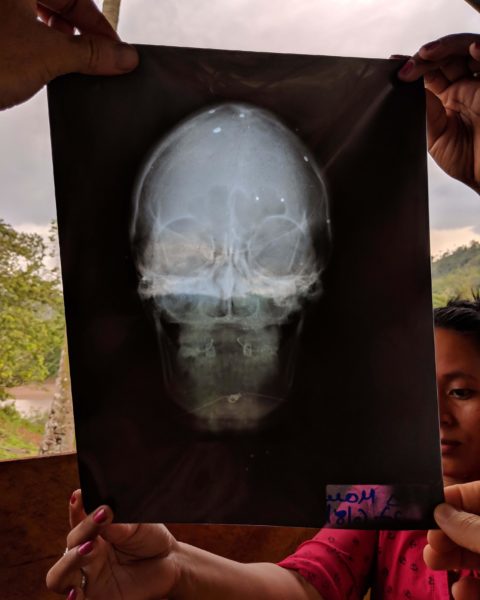
Violence
Bosawas land confrontations have turned violent. Indigenous people have been terrorized off of their land, injured, kidnapped, or killed. The Mayangna have repeatedly informed the police about death threats but government response has been inadequate. Between 2011 and 2020, there were reports of over 62 Mayangna and Miskitu killed in the region in land disputes. These include targeting of indigenous leaders and their families. One who was killed, Miskitu youth leader Mark Rivas, claimed that members of the Kokolon gang had infiltrated the local military, the same gang later reported responsible for the 2020 and 2021 attacks in Sauni As, just west of the Lakus, where 20 Mayangna were killed.
While over 80 assailants were involved in the 2021 attack, and with witnesses willing to testify, only one person was arrested, released quickly with no charges. Until this year, this was the only arrest in relation to the land invasion. The UN High Commissioner on the Attacks Against Indigenous Peoples has called on the Nicaraguan government to investigate these murders, prosecute those responsible, and to act more forcefully on the problem of land invasions and violence in Bosawás.
In January of this year, responding to an attack on a Mayangna village, Mayangna guardabosques from Sauni As captured 24 colonos who were then passed to the Nicaraguan police and taken to Managua for trial.. This is the first mass arrest in the history of these land thefts. Because of previous government inaction, Mayangna are skeptical of the colonos facing charges.
Violence has escalated and gotten closer to the Lakus. On 20 February of this year, a group of Mayangna in Sauni Bu indigenous territory coming to evict colonos up the Pilawas were ambushed near the southern edge of the Lakus watershed. The colonos killed an accompanying police officer, Alexander Urbina Mora. No response has been reported yet from the police. In a further escalation, in March another organized attack involving approximately 70 heavily armed colonos happened in Sauni As, just east of the Lakus, killing another 5 Mayangna.
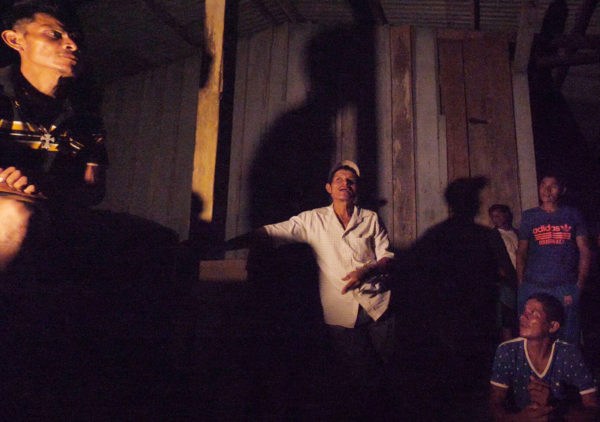
Lakus invasion
In 2018, Arang Dak villagers found cleared carrils in the upper Lakus. While there had been sporadic colono invasions in the Lakus over the years, this was the sign of the beginning of a mass invasion. Fearing violence, villagers abandoned outlying fincas and retreated back to the village. In January 2022, a party of 30 Mayangna and Miskitu guardabosques made a joint expedition up the Lakus to contact the colonos, hoping to avoid bloodshed. They encountered an encampment of 6 colonos scouting land at the confluence of the Lakus and Mura Tingni, about 20 km from Arang Dak. After a brief standoff, the colonos surrendered their guns and agreed to meet with Arang Dak community leader, Nacilio Miguel. The Mayangna shared food as a peace signal.
The detained colonos reported that a village had been created an hour up the Mura Tingni, with at least 11 households. Trail access had been built to the river system, giving access from Bonanza. The colonos had purchased land from two men, known to Arang Dak villagers for land thefts elsewhere in Bosawas, their identities confirmed with photos. The Maynagna released the colonos with a warning, returning the rifles. They communicated their shared position as poor people in Nicaragua and asked the men to communicate to the other colonos that the Mayangna wanted to maintain open communication, but that the Lakus watershed is indigenous territory,.

In reality, they would not have been able to do much else. In this encounter, the Mayangna had the numerical advantage, but they did not have the guns or men necessary to expel the numerous and better armed colonos from the watershed.
Satellite images from Global Forest Watch reveal land clearing up all of the tributaries of the Lakus, starting in 2017 (see timelapse). Before 2017, the 450+ sq km of upper watershed was untouched. Between 2019 and 2021, colonos cleared about 6% of the upper watershed… almost 3 times as much land clearing as the Mayangna in the previous 20 years in the entire 800 sq km watershed. This is horrific for the most difficult to reach and until now best preserved section of Bosawás.

Conservationists have identified 4 pinch points in the Central American rainforest as vital for maintaining forest connectivity, essential as wildlife corridors for large mammals like jaguar which require extensive territories to thrive. The deforestation in the upper Lakus watershed threatens to cut off 2 of these. As these corridors are degraded, it puts disproportionate, unique stress on endangered wildlife.
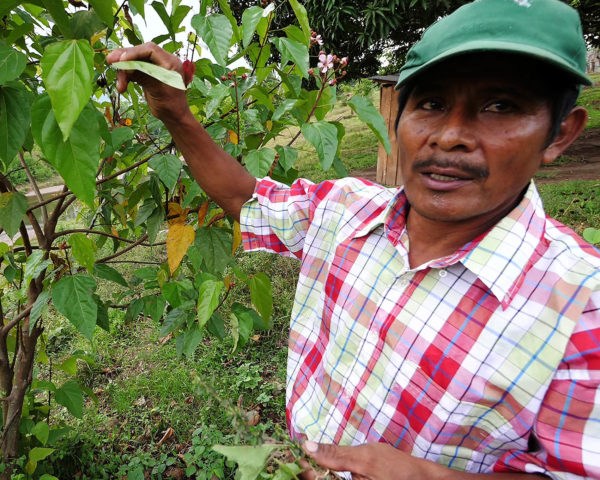
Satellite images from 2022 shows at least 80 new sites of land clearing in the upper Lakus, and in October, carrils were found cut within 4km of the village. Moreover, the wave of colono land clearings extends from the sites of the recent violence.
What is happening in the Lakus is a microcosm of the region: escalating colono invasion, false land titles, increasing threat and violence, and rapid forest loss. Starting in 2016, colono land clearings started to drastically accelerate in all the surrounding territories: Sauni As, Sauni Bu, Sauni Bas, and Li Lamni Tasbaika. Indigenous people lose territory, and in some cases are completely driven out of their villages.
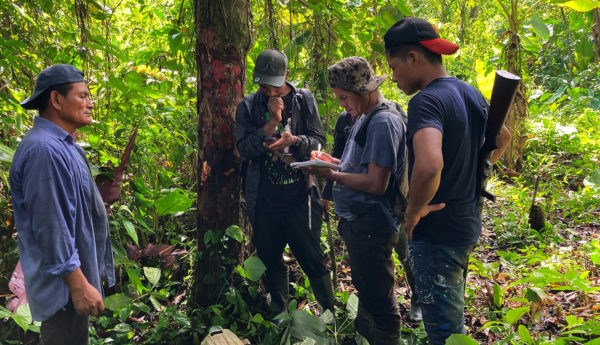
Unlike in neighboring Honduras, laws already exist in Nicaragua to protect indigenous land. The problem is enforcing existing laws. Mayanga leaders call for those selling and clearing the land to be held accountable, but this requires the Nicaraguan government to invest more in protecting indigenous territories.
The Mayangna seek support to perform regular expeditions up the Lakus and its tributaries and to establish a permanent base up river from Arang Dak as a contact point as colonos came down river. They have come to feel that action to stop the flow of land thefts will only happen if they do it themselves. The January arrest of 24 colonos in Sauni As by Mayangna guardabosques reinforces this sentiment. These are dangerous actions, but more so without support.
Photos from the colono encounter and satellite images of land clearing in the Lakus were shared in a recent meeting with government officials. The Mayangna hope that international attention may bring further support to avoid the displacement and bloodshed they experienced in 1980s.

The Nicaraguan government has had a mixed relationship to the indigenous controlled areas. Nicaragua has led other central American countries in indigenous land titling and in the creation of Bosawas. However, in December 2021 the Ortega government granted gold mining concessions under 70% of the Bosawas Biosphere reserve and was in the approval process for the remaining 30%. In June, the Sandinista government shut down over 250 environmental and social NGOs.
The UNFAO has over the last 30 years singled out Nicaragua for the worst rate of deforestation in the western hemisphere. As Nicaragua runs out of forest to clear, the deforestation frontier is turning to indigenous and reserve territories. As the the invasion reaches the core of these territories, tropical rainforests face irreversible losses and indigenous people risk losing everything.






